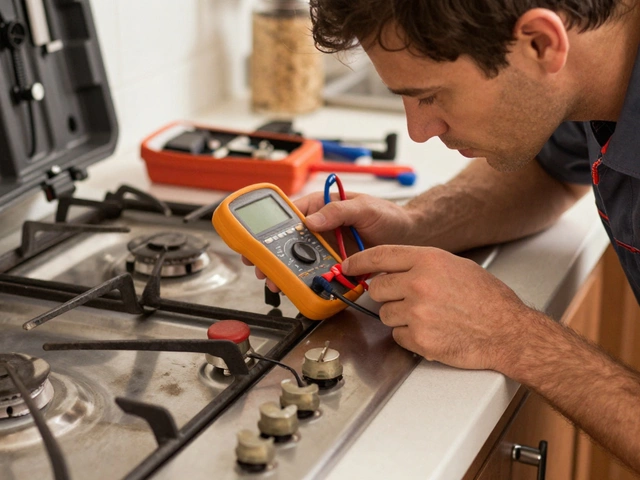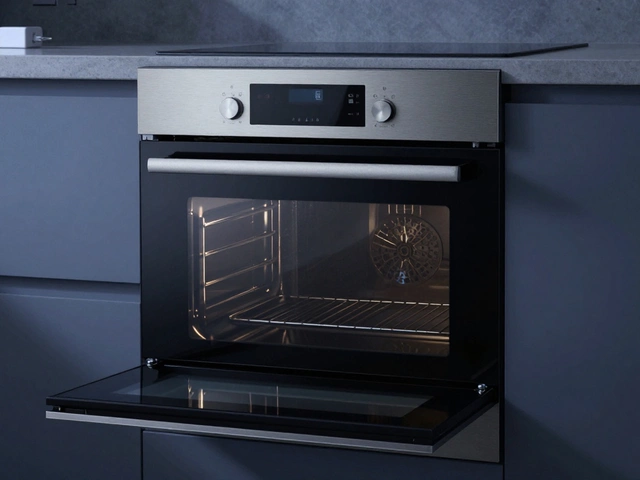Electronic Device
When working with electronic device, any gadget that uses electricity to perform a function, from kitchen appliances to laptops. Also known as electronic equipment, it powers daily life and often needs fixing before it’s replaced.
Appliance, a subset of electronic devices designed for household tasks such as cooking, cooling, or cleaning is the most common category you’ll see in our posts. From ovens that won’t heat to freezers that stop making ice, the repair journey usually starts with a quick diagnosis, followed by a decision: repair or replace? This decision hinges on three things – cost, safety, and how long you expect the unit to last after fixing it.
Why Understanding Electronic Device Repairs Matters
Every repair story links back to a few core ideas. First, Laptop, a portable computer that’s also an electronic device illustrates the cost‑benefit analysis many homeowners face: a broken screen versus a new model. Second, Refrigerator, a cooling appliance that keeps food fresh shows how energy efficiency can tip the scales toward replacement if the unit is old and leaky. Finally, a Boiler, a heating system that also counts as an electronic device brings safety into the conversation – a faulty boiler can pose gas or carbon‑monoxide risks that outweigh repair savings.
These examples help illustrate three semantic triples: Electronic device encompasses appliance, Repairing an electronic device often requires specialized tools, and Choosing to fix a laptop influences long‑term cost savings. By keeping these connections in mind, you can quickly spot which fixes are worth your time and money.
Most of the articles below break down common problems step by step. They start with quick visual checks – like listening for a humming freezer or feeling an oven’s heat – then move to deeper diagnostics, such as testing thermostats or measuring voltage. Knowing the typical failure points (heating elements, igniters, pressure switches) lets you decide if a DIY fix is safe or if you should call a pro.
Safety is a recurring theme across every post. For instance, while swapping a broken oven heating element may be a simple screwdriver job, tampering with a gas boiler’s combustion chamber without the right certification can be dangerous. We stress when to wear protective gear, disconnect power, or shut off gas, and we always recommend hiring a Gas Safe registered engineer for anything beyond basic component swaps.
Cost‑effectiveness is another thread. Our “Oven Repair vs Replacement” guide shows that a typical repair costs between £80‑£150, while a new mid‑range oven can run £500‑£800. Add in energy savings – an older oven may waste up to 30% more electricity – and the balance shifts quickly. Similar calculations appear in the “Repair or Replace a Refrigerator” piece, where a cracked door seal might cost £50 to fix versus a £400 new fridge, but older units often consume more power.
When it comes to appliances that also serve as comfort devices, like heating boilers or water heaters, lifespan matters. A well‑maintained boiler can last 15‑20 years; neglect can cut that in half and raise the risk of catastrophic failure. Our posts on boiler emergencies and regular servicing outline the warning signs you should never ignore – strange noises, low pressure, or water leaks.
Finally, the collection covers the whole range of electronic device categories you’ll encounter at home. Whether you’re troubleshooting a noisy extractor fan, figuring out why hot water works in the kitchen but not the bathroom, or debating if an old laptop is still repairable, each article provides clear steps, cost estimates, and safety tips. By reading through, you’ll build a mental checklist for any device: identify the symptom, locate the likely component, assess repair cost versus replacement, and decide on DIY or professional help.
Ready to dive deeper? Below you’ll find practical guides, cost breakdowns, and expert advice that walk you through the most common electronic device issues, help you save money, and keep your home running safely.


